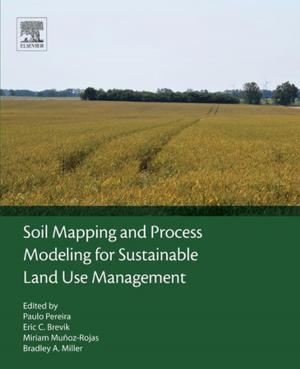Human Recognition in Unconstrained Environments
Using Computer Vision, Pattern Recognition and Machine Learning Methods for Biometrics
Nonfiction, Computers, Advanced Computing, Engineering, Computer Vision, Application Software, General Computing| Author: | ISBN: | 9780081007129 | |
| Publisher: | Elsevier Science | Publication: | January 9, 2017 |
| Imprint: | Academic Press | Language: | English |
| Author: | |
| ISBN: | 9780081007129 |
| Publisher: | Elsevier Science |
| Publication: | January 9, 2017 |
| Imprint: | Academic Press |
| Language: | English |
Human Recognition in Unconstrained Environments provides a unique picture of the complete ‘in-the-wild’ biometric recognition processing chain; from data acquisition through to detection, segmentation, encoding, and matching reactions against security incidents.
Coverage includes:
-
Data hardware architecture fundamentals
-
Background subtraction of humans in outdoor scenes
-
Camera synchronization
-
Biometric traits: Real-time detection and data segmentation
-
Biometric traits: Feature encoding / matching
-
Fusion at different levels
-
Reaction against security incidents
-
Ethical issues in non-cooperative biometric recognition in public spaces
-
With this book readers will learn how to:
-
Use computer vision, pattern recognition and machine learning methods for biometric recognition in real-world, real-time settings, especially those related to forensics and security
-
Choose the most suited biometric traits and recognition methods for uncontrolled settings
-
Evaluate the performance of a biometric system on real world data
-
Presents a complete picture of the biometric recognition processing chain, ranging from data acquisition to the reaction procedures against security incidents
-
Provides specific requirements and issues behind each typical phase of the development of a robust biometric recognition system
-
Includes a contextualization of the ethical/privacy issues behind the development of a covert recognition system which can be used for forensics and security activities
Human Recognition in Unconstrained Environments provides a unique picture of the complete ‘in-the-wild’ biometric recognition processing chain; from data acquisition through to detection, segmentation, encoding, and matching reactions against security incidents.
Coverage includes:
-
Data hardware architecture fundamentals
-
Background subtraction of humans in outdoor scenes
-
Camera synchronization
-
Biometric traits: Real-time detection and data segmentation
-
Biometric traits: Feature encoding / matching
-
Fusion at different levels
-
Reaction against security incidents
-
Ethical issues in non-cooperative biometric recognition in public spaces
-
With this book readers will learn how to:
-
Use computer vision, pattern recognition and machine learning methods for biometric recognition in real-world, real-time settings, especially those related to forensics and security
-
Choose the most suited biometric traits and recognition methods for uncontrolled settings
-
Evaluate the performance of a biometric system on real world data
-
Presents a complete picture of the biometric recognition processing chain, ranging from data acquisition to the reaction procedures against security incidents
-
Provides specific requirements and issues behind each typical phase of the development of a robust biometric recognition system
-
Includes a contextualization of the ethical/privacy issues behind the development of a covert recognition system which can be used for forensics and security activities















